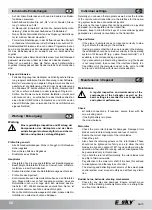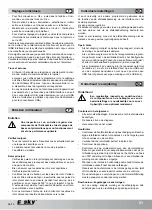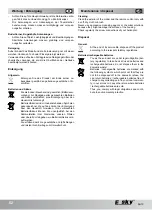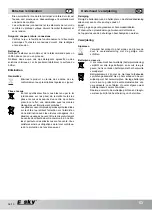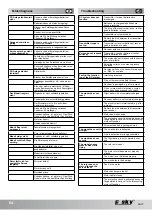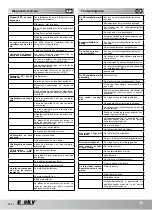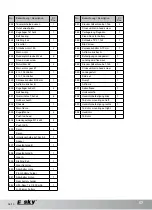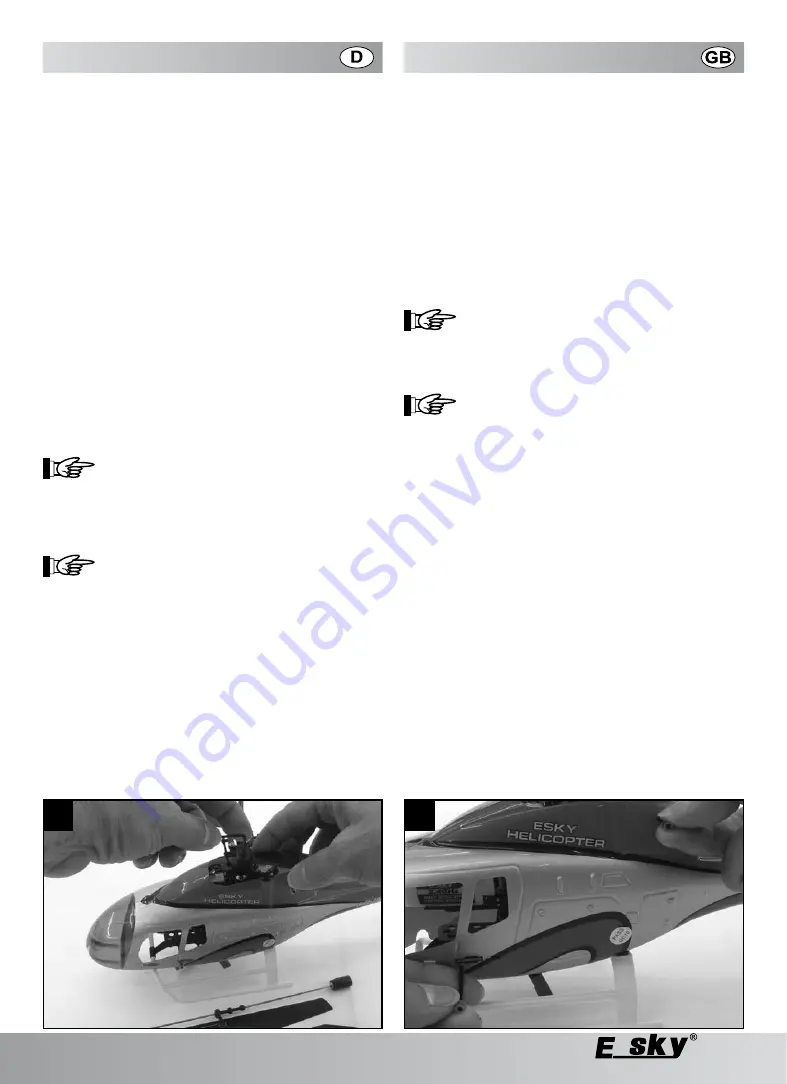
06/10
42
Individuelle Einstellungen
Individual settings
Drehen Sie dazu am zu hoch laufendem Blatt die Einstell-
schraube in kleinen Schritten (1/8 Umdrehungen) nach au-
ßen. Dadurch wird der Anstellwinkel des Rotorblattes verrin-
gert und das Blatt läuft durch den geringeren Auftrieb nicht
mehr so hoch.
Wenn Sie im entstehenden Spalt einen dünnen Papierstrei-
fen mit der erforderlichen Dicke einfügen, können Sie die
Einstellschraube wieder vorsichtig festschrauben.
Parallel dazu können Sie prüfen, ob die Einstellschraube am
zu niedrig laufendem Rotorblatt ganz eingedreht ist.
Oberer Rotorkreis (28):
Die Anstellwinkel der Rotorblätter im oberen Rotorkreis wer-
den in erster Linie durch die Stellung der Fliehgewicht-Stan-
ge (a) bestimmt.
Wenn das Rotorblatt (b) links vom Anlenkgestänge (c) zu
hoch läuft, muss das Gestänge am unteren Befestigungs-
punkt (d) ausgehängt und um eine halbe Umdrehung ver-
längert werden.
Sollte das Rotorblatt zu niedrig laufen, muss das Gestänge
um eine halbe Umdrehung verkürzt werden.
Wiederholen Sie diesen Vorgang so oft, bis sich auch am
oberen Rotor ein sauberer Spurlauf einstellt.
Die beiden Einstellschrauben (e) müssen dabei fest ange-
zogen sein.
Achten Sie dabei darauf, dass Sie nach dem
Verändern der Gestängelänge die Ösen des
Gestänges im Winkel von 40-45° zueinander
einstellen.
Ausbau der Bordelektronik
Das Chassis mit der Bordelektronik lässt sich
nach Demontage der Fliehgewichtstange und
der Rotorblätter aus dem Rumpf ausbauen.
Lösen Sie das Anlenkgestänge für die Fliehgewichtstange
vom Rotorkopf, indem Sie das Gestänge vorsichtig von dem
Kugelkopf hebeln.
Biegen Sie die Kunststoffhalterung der Fliehgewichtstange
auf der Rotorwelle leicht auseinander und
nehmen Sie die Fliehgewichtstange ab.
Lösen Sie jeweils eine Schraube der Rotorblatthalterung und
entnehmen Sie die Rotorblätter (29).
Der Rumpf ist mit zwei quer durch den Rumpf geführten Stiften
am Chassis befestigt. Der eine Stift geht auf halber Höhe mittig
durch Rumpf und Einbauten, der zweite Stift hält den Rumpf
oben hinter dem Rotorkopf am Chassis.
-
-
-
-
-
-
-
-
-
-
-
-
At the same time, you can check if the setting screw at the
rotor blade that runs too low is fastened through completely.
Upper rotor circuit (28):
The angles of attack of the rotor blades in the upper rotor
area are determined primarily by the position of the flyball
rod (a).
If the rotor blade (b) at the left of the steering linkage (c) runs
too high, the linkage at the lower attachment point (d) must
be unhinged and lengthened by a half rotation.
If the rotor blade runs too low, the linkage must be shortened
by a half rotation.
Repeat this procedure until the upper rotor shows a correct
alignment as well.
Both setting screws (e) must be tightened firmly.
Note! Make sure after the modification of the
length of the linkage to set the eyelets of the
linkage in an angle of 40-45° to each other.
Removing the avionics
The centrifugal weight rod and the rotor blades
must first be taken out of the fuselage in order
to remove the chassis.
Detach the linkage rod for the centrifugal weight rod from
the rotor head by carefully prying the rod assembly from the
spherical head.
Bend slightly apart the plastic retainer for the centrifugal
weight rod on the rotor shaft and take off the centrifugal
weight rod.
Unscrew one screw each for the rotor blade retainer and take
off the rotor blades (29).
The fuselage is attached to the chassis by two pins that run
through the fuselage crosswise.
One of the pins goes midway through the fuselage and avionics,
and the second pin holds the fuselage to the chassis at the top
behind the rotor head.
Remove one of the two rubber stoppers from the retainer pin
in each case and
then pull it out from the other side (30).
The blue LED on the tail boom (navigation light) is still attached
to the electronics module.
Pull the plug of the connecting cable out of the electronics
module on the bottom right-hand side (31).
The chassis along with the entire avionics can then be taken
out of the bottom of the fuselage.
-
-
-
-
-
-
-
-
-
-
-
-
29
30
32
31























